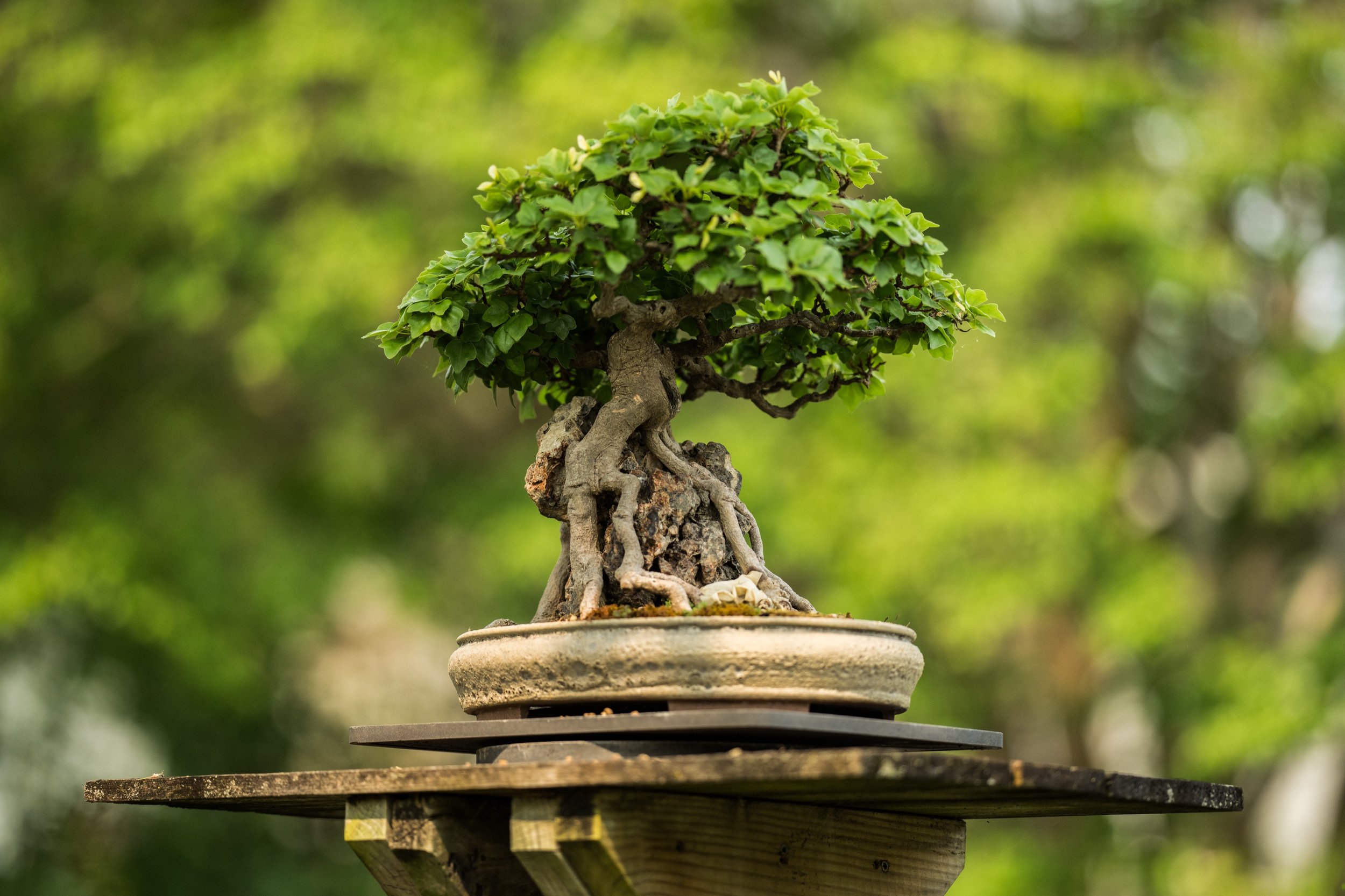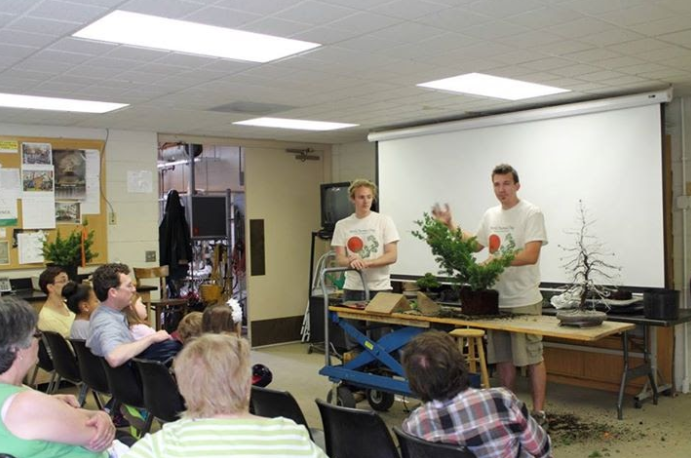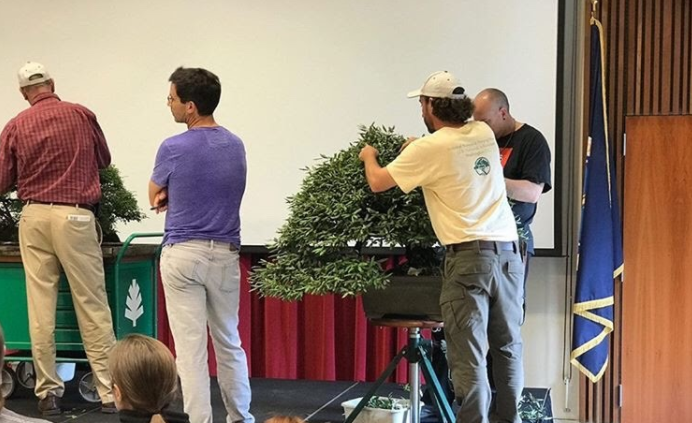I’m very pleased to be able to tell you that Andy Bello will begin his permanent position as Assistant Curator of the National Bonsai & Penjing Museum on June 21, 2020. Andy finished his internship as our most recent First Curator Apprentice in March. Since that time, he has served as a temporary technician and will continue to do so until June 21.
Andy has a deep commitment and true passion for bonsai and penjing. He is very engaging and is always ready and willing to share that passion with visitors and volunteers alike. We are very fortunate to have him in this permanent position. Andy hails from Illinois and has spent time in Arizona and Oregon. He’s worked with koi in a previous job, so he knows his fish, too.
Because the bonsai and penjing require daily care, Andy will work a Sunday through Thursday schedule, but this schedule has been somewhat disrupted by the current coronavirus situation. He and Michael have been working overtime to tend the plants with help from Pat Lynch and Brad Evans to make up for all the lost volunteer help while that program is on a pause for safety reasons.
Please join me in congratulating Andy on his new appointment. He is a great asset to our bonsai team.
Scott Aker
Head of Horticulture and Education
U.S. National Arboretum

































